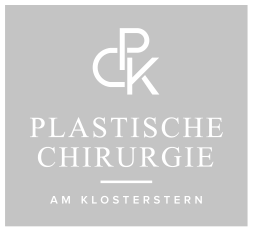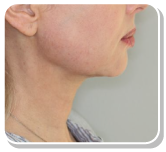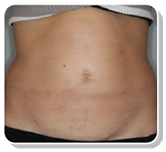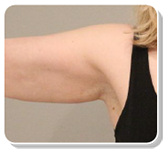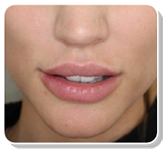Congenital Breast Conditions
Offered at our convenient location in Hamburg
Addressing congenital breast conditions such as asymmetrical breasts, inverted nipples, or misshapen breasts is important for improving your appearance and well-being. With a collection of customizable breast procedures, we can reshape the breasts to improve your self-confidence and help you achieve natural-looking results with minimal downtime.
At Plastische Chirurgie am Klosterstern, Dr. Dalia Tobbia has helped thousands of patients improve their figures with customizable body and breast procedures. She can emphasize your most beautiful features and is well known for her artistic approach. Enhancing the appearance of your breasts is not just cosmetic; congenital conditions can impact your quality of life, making it difficult to breastfeed or wear clothing you find flattering.
Contact our Hamburg office or call +49 40 46 091 076 to learn how congenital breast procedures can enhance your appearance for stunning, natural-looking results.
Contents
- 1 About Congenital Breast Conditions
- 2 Common Breast Conditions
- 3 Benefits of Addressing Congenital Breast Conditions
- 4 Candidates & Consultation
- 5 Preparation and Treatment Process
- 6 After Treatment for Congenital Breast Conditions
- 7 Cost of Congenital Breast Condition Treatments in Hamburg
- 8 FAQ
- 8.1 Does treatment of congenital breast conditions require downtime?
- 8.2 Will I lose sensation in my nipples after addressing congenital breast conditions?
- 8.3 Can congenital breast conditions return after treatment?
- 8.4 Can I receive congenital breast condition treatments if I am pregnant or breastfeeding?
- 9 References
About Congenital Breast Conditions
Breasts are a distinguishing feature of feminine allure in our culture, and any congenital condition can impact your self-esteem and sense of well-being. Symptoms of congenital breast conditions commonly occur during puberty and can affect either one or both breasts. They can lead to noticeable asymmetry, influencing self-esteem, limiting clothing options, and impacting intimate relationships.
With congenital breast treatments, Dr. Tobbia can reshape the breasts to balance your proportions and improve the appearance of the nipples. At Plastische Chirurgie am Klosterstern, we have extensive experience addressing common breast conditions with innovative, cutting-edge treatments that have helped many patients obtain an aesthetically pleasing and natural-looking breast shape.
Common Breast Conditions
Breast Asymmetry
If your breasts are asymmetrical, one breast may be small (hypoplastic) or completely absent. Some patients also have a condition that affects the underlying muscle, resulting in a significant difference in the size of both breasts. To address asymmetrical breasts, Dr. Tobbia can perform breast augmentation to increase the volume of the smaller breast with an implant or perform a fat transfer. She can also reduce the size of the larger breast by performing breast reduction, depending on your aesthetic preferences. Some patients will need a combination of both procedures to meet their aesthetic goals. If you receive a breast augmentation, she may need to use a soft tissue expander. This implant stretches the skin gradually before breast augmentation to prepare your breast for an implant.
Tubular Shaped Breasts
Tubular breast mounds are cylinder-shaped instead of round and have large, “puffy” nipples. The condition can affect one or both breasts, and Dr. Tobbia can create a personalized treatment plan based on the condition of your breasts. She can reshape the breast mounds and reduce the nipple size to help you achieve your desired results. Depending on your goals, she can also perform breast augmentation.
Poland’s Syndrome
Poland’s syndrome is a condition that can cause one breast and/or nipple to be absent or underdeveloped. In some cases, the underlying chest muscle and/or rib cage may also be underdeveloped (1). The condition usually only affects one side of the body. To address this, Dr. Tobbia can perform breast augmentation with implants or a breast expander followed by fat transfer. However, many other surgical procedures are also available, and an individual treatment plan will help you meet your goals.
Nipple Deformities
If your nipples are asymmetrical, they may differ in size, shape, or position. Asymmetrical nipples can significantly affect the overall appearance of your breasts. Inverted nipples are a common problem that can occur in either one or both breasts. In addition to being unsightly, they can cause functional issues, making breastfeeding more difficult. Dr. Tobbia can address inverted nipples with a specialized technique that involves minimal scarring. Depending on your needs, she can address one or both nipples and perform other breast procedures to improve your well-being.
Gynecomastia
Gynecomastia is a condition that causes abnormal breast growth in males. It affects approximately 32-65% of men at some point in their lives (2), and it can result in anxiety. Breast tissue affects the way clothing fits, and when men suddenly develop breasts, it can also impact their quality of life. It occurs when men experience a spike in estrogen levels, often as a result of genetic disorders or reproductive issues. Sometimes, it can also result from using prescription medication, steroids, or recreational drugs. Dr. Tobbia can perform breast reduction procedures to remove the excess tissue for a more masculine chest.
Benefits of Addressing Congenital Breast Conditions
There are several benefits to addressing congenital breast conditions, including:
- Balanced proportions: You can enjoy a more balanced appearance after addressing congenital breast conditions.
- Improved self-confidence: Addressing asymmetry can help you feel more comfortable about your body.
- Increased clothing options: You can enjoy better-fitting bras and clothing and more clothing options.
- Customizable procedure: We can address specific concerns with the procedure and personalize it based on your unique needs.
- Natural-looking results: You can enjoy natural results with a smoother, more youthful-looking body.
- Improved breast symmetry: We can balance the size and shape of your breasts for a more symmetrical look.
Candidates & Consultation
Suitable candidates for congenital breast treatments would like to reshape their breasts and/or nipples to enhance their appearance. If you are a nonsmoker in good overall health, you are likely a good candidate for the procedure. First, you will need to have a personal consultation with Dr. Tobbia. She will create a personalized treatment plan based on your aesthetic goals and discuss your treatment options in depth. She may also take photographs and create diagrams to explain the procedure step-by-step, including limitations and possible risks based on your medical history.
Candidates must have realistic expectations about what they can achieve with the procedure. If you have additional aesthetic goals, Dr. Tobbia can recommend other procedures to help you achieve them. Depending on your needs, she can increase the size of your breasts or sculpt other areas of the body. See the blog to learn more about our additional procedures!
Preparation and Treatment Process
The preparation process for treating congenital breast conditions will vary depending on your personalized treatment plan, which is based on your underlying anatomy, congenital condition, and goals. To achieve symmetry and the best possible aesthetic outcome, Dr. Tobbia will create a detailed treatment plan with specific instructions to help you prepare. You will need to stop smoking for several weeks and stop taking blood thinners for 1-2 weeks before the procedure.
We also recommend preparing meals, running errands, and making a comfortable place in your home to recover afterward. You will need to pick up prescriptions for your recovery ahead of time and make arrangements for someone you trust to drive you home and care for you for the first 24-48 hours afterward.
After Treatment for Congenital Breast Conditions
Although the recovery process will vary depending on the type of treatment you receive, you must follow up with the office shortly afterward so Dr. Tobbia can monitor your progress. To help your body heal properly, you will also need to wear non-stick dressings and an elastic bandage or support bra. You must also avoid strenuous activities and heavy lifting for several weeks. Based on your procedure, Dr. Tobbia will let you know when you can return to regular exercise.
Your results will depend on the treatment plan outlined for your aesthetic goals. After treating congenital breast conditions, you can enjoy a more balanced, symmetrical appearance and a fuller, curvier look. The long-lasting results can also improve your self-confidence. Your results will depend on your procedure and the specific conditions we address.
Cost of Congenital Breast Condition Treatments in Hamburg
The cost of your treatment will depend on whether or not you need additional, corresponding procedures to meet your goals. We can provide you with an all-inclusive quote based on your needs when you attend a personal consultation.
Contact our Hamburg office or call +49 40 46 091 076 to learn more.
FAQ
Does treatment of congenital breast conditions require downtime?
Recovery times will vary depending on your specific treatment plan, but generally, patients who receive treatment for congenital breast conditions do require a few weeks of downtime.
Will I lose sensation in my nipples after addressing congenital breast conditions?
Sometimes, patients experience changes to nipple sensitivity after addressing nipple inversion, and we can discuss any questions you have based on your personalized procedure plan during your consultation.
Can congenital breast conditions return after treatment?
Congenital breast condition treatments are long-lasting, and you should be able to achieve your goals after just one procedure, but we can address your questions during your consultation.
Can I receive congenital breast condition treatments if I am pregnant or breastfeeding?
If you plan to breastfeed, we may recommend waiting to address inverted nipples because the procedure can alter the position of the milk ducts. During your consultation, we can answer any questions you have.
References
1. Borsuk D, Caouette-Laberge L. Congenital Anomalies of the Breast. Seminars in Plastic Surgery. 2013;27(01):036-041. doi:https://doi.org/10.1055/s-0033-1343995
2. Kanakis GA, Nordkap L, Bang AK, et al. EAA clinical practice guidelines—gynecomastia evaluation and management. Andrology. 2019;7(6):778-793. doi:https://doi.org/10.1111/andr.12636
